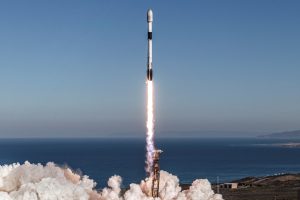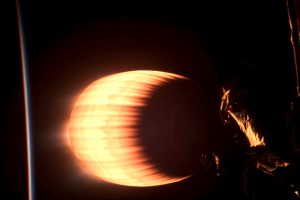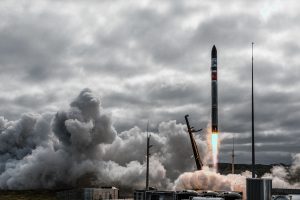SpaceX says it has successfully static-fired a Falcon 9 rocket scheduled to launch the company’s second National Reconnaissance Office (NRO) spy satellite mission of 2022 later this month.
Known as NROL-85, it may or may not be related to the NROL-87 mission SpaceX successfully launched out of its Vandenberg Space Force Base (VSFB) SLC-4 facilities on February 2nd. By all appearances, NROL-85 will be quite similar. Aside from using the same launch pad and carrying a payload light enough to allow for a rare return-to-launch-site (RTLS) landing, NROL-85 will also use the same Falcon 9 booster – B1071 – that launched NROL-87 as few as 72 days prior.
The missions’ launch inclinations, however, are around 70 degrees apart, which could mean that the similarities between NROL-85 and NROL-87 are purely coincidental just as easily as it could imply that the missions are two parts of a larger constellation with multiple orbital ‘planes.’ The NRO’s extreme secrecy means that it’ll likely be decades (or never) before anyone actually knows their true purpose.
The NRO says NROL-85 is on track to lift off no earlier than (NET) 6:41 am PDT (13:41 UTC) on Friday, April 15th. Aside from narrowly missing out on an opportunity for a spectacular predawn launch, the current schedule has Falcon 9 launching almost ten days after its static fire test – perhaps the longest intentional gap between a SpaceX Falcon static fire and launch in recent memory. SpaceX has had occasional missions where technical issues or weather have delayed a launch by one or several weeks. However, it’s difficult to remember another instance where SpaceX successfully completed a static fire more than a week prior to a pre-planned launch date.
For years, a roughly 2-7-day delay between static fires and launches has become the norm for nominal operations, including particularly critical missions for NASA, the NRO, and the US military. NROL-87, for example, saw SpaceX static fire the same Falcon 9 booster scheduled to launch NROL-85 one week before launch. Oddly, NROL-85 will be the NRO’s second reuse of a Falcon 9 after NROL-108 launched on a four-flight booster in 2020, which makes it difficult to argue that reusability aspect of NROL-85 is responsible for the gap.

It’s possible that NROL-108 was a more risk-tolerant experiment or one-off payload and that NROL-87 and -85 are somehow more ‘operational,’ which might explain the unusually long delay between NROL-85’s static fire and launch date. It could also be mere conservatism. Such a long gap left the NRO and SpaceX with plenty of flexibility to deal with any minor to moderate issues that might arise without immediately disrupting the April 15th target.
Unsurprisingly, that margin was likely unnecessary. The static fire was completed without issue on April 5th, leaving SpaceX firmly on track to launch NROL-85 on April 15th with almost ten full days to roll the rocket back to the hangar, install Falcon 9’s fairing, and roll the rocket back out to the pad. The mission will mark SpaceX’s 91st booster reuse and 89th launch with a flight-proven Falcon booster since March 2017.
Later this month, SpaceX is preparing to launch Crew-4 – carrying four NASA and ESA astronauts – as early as April 21st and Starlink 4-14 a few days after that.





